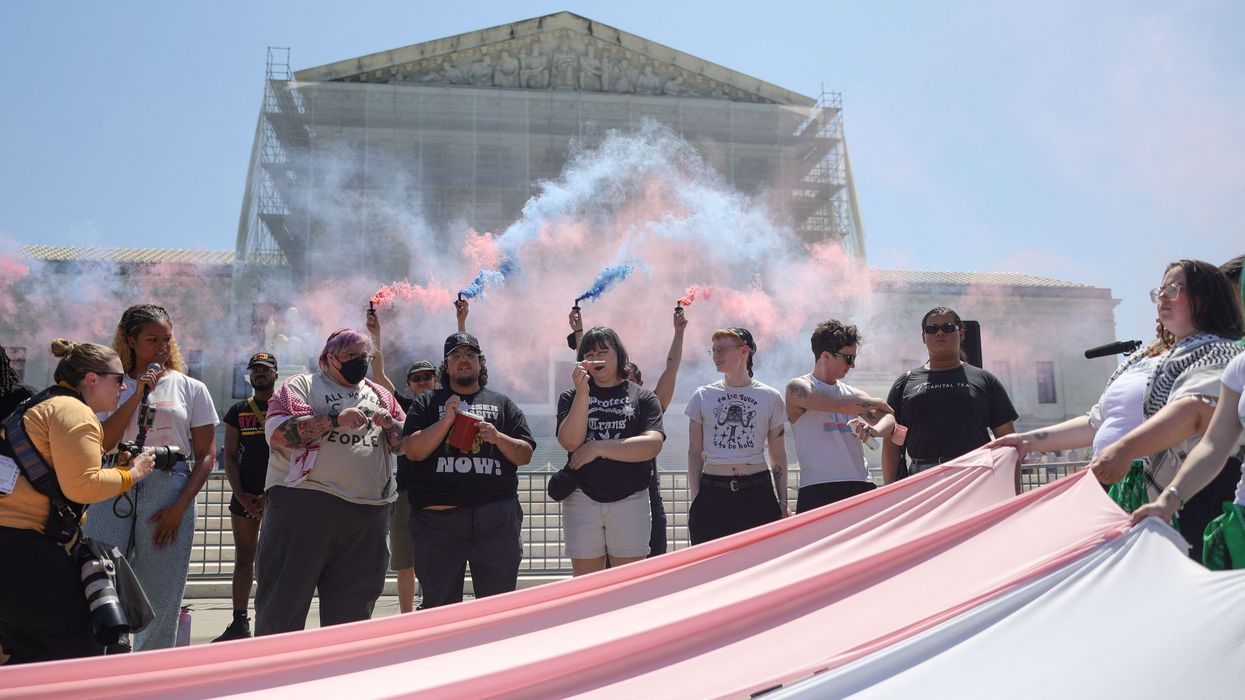With Food Banks in 'Disaster Response Mode,' Supreme Court Lets Trump Pause SNAP Funds
"This is insane," said US Rep. Pramila Jayapal. "Trump is jumping through hoops to block SNAP."
The US Supreme Court late Friday temporarily blocked a lower court order that required the Trump administration to fully fund Supplemental Nutrition Assistance Program benefits as the government shutdown drags on with no end in sight.
One wrinkle in the case is that the Supreme Court order, which came after the Trump administration appealed the lower court directive, was handed down by liberal Justice Ketanji Brown Jackson. Her brief order came after the Massachusetts-based US Court of Appeals for the 1st Circuit opted not to swiftly intervene in the case.
Jackson, who is tasked with handling emergency issues from the 1st Circuit, wrote that her administrative stay in the case will end 48 hours after the appeals court issues a ruling in the case.
The justice's order came after states across the US had already begun distributing SNAP benefits after a district court judge directed the Trump administration to release billions of dollars in funds by Friday.
"Some people woke up Friday with the money already on the debit-like EBT cards they use to buy groceries," NPR reported.
Steve Vladeck, a law professor at Georgetown University, wrote Friday that "it may surprise folks that Justice Jackson, who has been one of the most vocal critics of the court's behavior on emergency applications from the Trump administration, acquiesced in even a temporary pause of the district court's ruling in this case."
He continued:
But as I read the order, which says a lot more than a typical “administrative stay” from the Court, Jackson was stuck between a rock and a hard place—given the incredibly compressed timing that was created by the circumstances of the case.
In a world in which Justice Jackson either knew or suspected that at least five of the justices would grant temporary relief to the Trump administration if she didn’t, the way she structured the stay means that she was able to try to control the timing of the Supreme Court’s (forthcoming) review—and to create pressure for it to happen faster than it otherwise might have. In other words, it’s a compromise—one with which not everyone will agree, but which strikes me as eminently defensible under these unique (and, let’s be clear, maddening and entirely f-ing avoidable) circumstances.
The Trump administration has fought tooth and nail to flout its legal obligation to distribute SNAP funds during the shutdown as low-income Americans grow increasingly desperate and food bank demand skyrockets.
"This is insane," US Rep. Pramila Jayapal (D-Wash.) wrote after the administration appealed to the Supreme Court. "Trump is jumping through hoops to block SNAP. Follow the law, fund SNAP, and feed American families."
Maura Healey, the Democratic governor of Massachusetts—one of the states that quickly moved to process SNAP benefits following the district court order—said in a statement that "Trump should never have put the American people in this position."
"Families shouldn’t have had to go hungry because their president chose to put politics over their lives," said Healey.
Feeding America, a nonprofit network of hundreds of food banks across the US, said Friday that food banks bought nearly 325% more food through the organization's grocery purchase program during the week of October 27 than they did at the same time last year.
Donations to food banks, which were underresourced even prior to the shutdown, have also skyrocketed. The head of a Houston food bank said the organization is in "disaster response mode."
"Across the country, communities are feeling the real, human impact the shutdown is having on their neighbors and communities,” said Linda Nageotte, president and chief operating officer at Feeding America. "Families, seniors, veterans, and people with disabilities are showing strength through the hardship, and their communities are standing beside them—giving their time and money, and advocating so no one faces hunger alone.”


